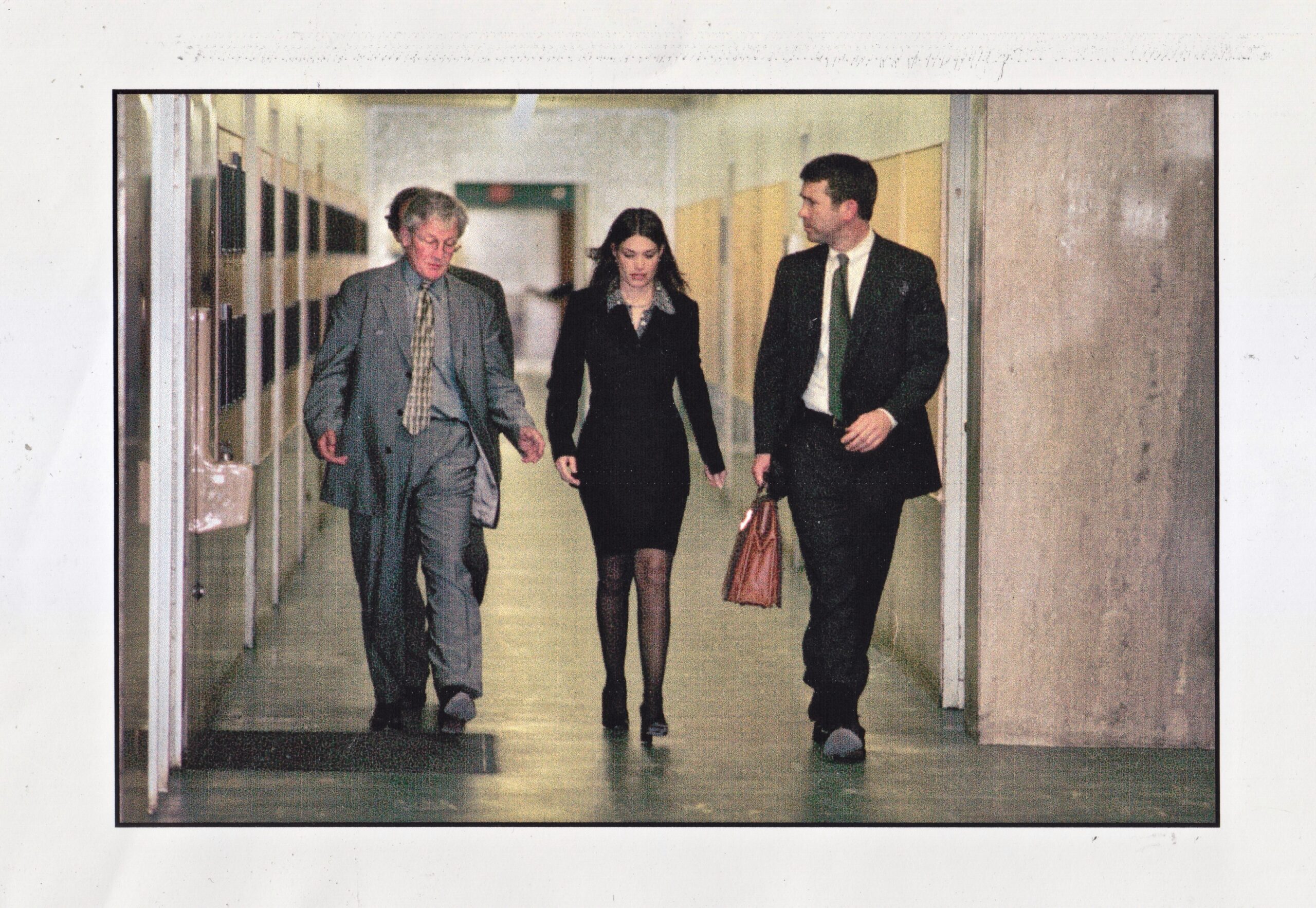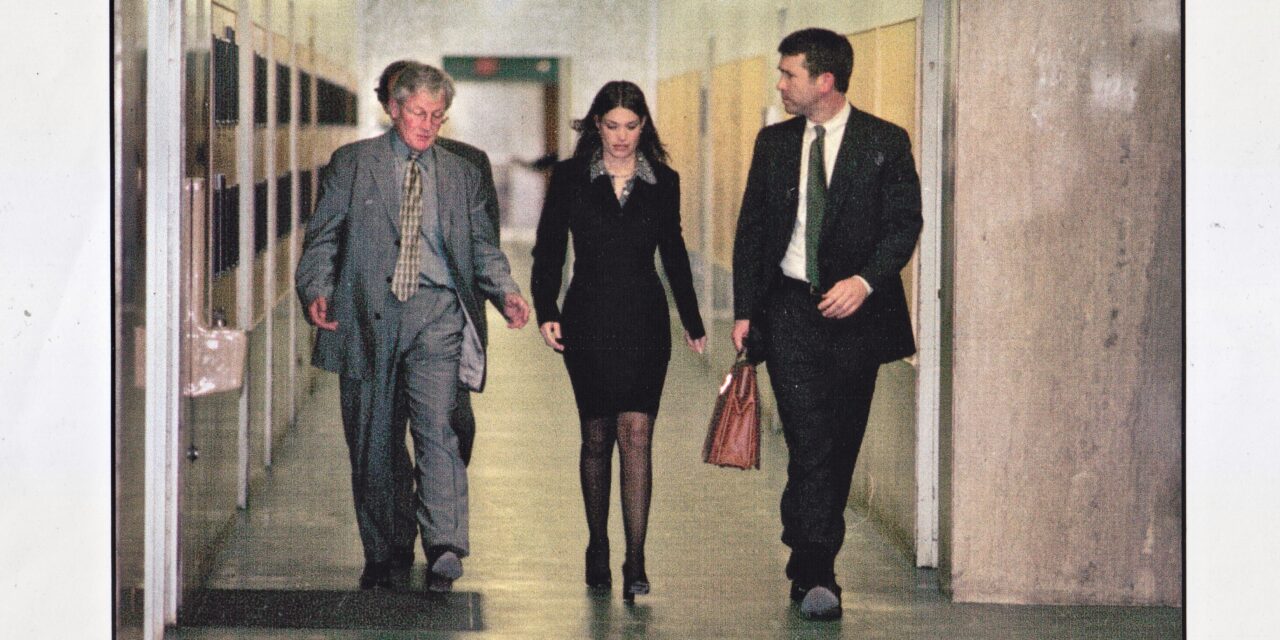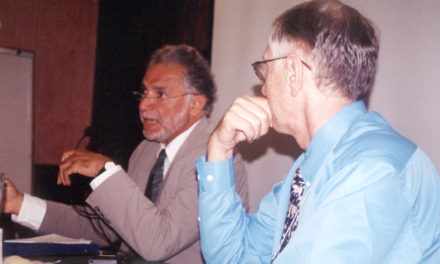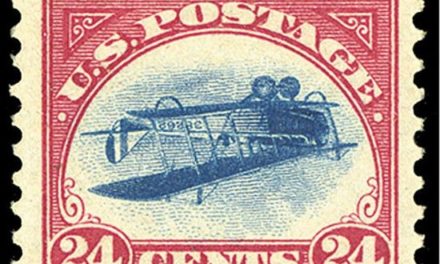August 3, 2020 Senator Kamala Harris is not the only Assistant DA who once worked for Terence Hallinan and is now in the national spotlight. Kimberly Guilfoyle, the significant other of Donald Trump, Jr., is a political “player” in her own right, with enemies powerful enough to plant a story in the New York Times headlined “Kimberly Guilfoyle’s Fund-Raising for Trump Draws Scrutiny.” A subhed explained, “Trump supporters inside and outside the campaign say the operation she’s built hasn’t lived up to expectations.”
Getting favorable ink for Kimberly was once part of my job. Does she ever think, “If only good old Fred was here to have my back?” Not likely.
As of January 2001, Kimberly was an un-famous prosecutor in SFDA’s General Litigation unit. Because she had handled a few animal abuse cases, she was assigned to a matter initially reported as a “tragic accident.” The victim, Diane Whipple, 33, was the lacrosse coach at St. Mary’s College. She lived on the sixth floor of an Art Deco apartment house in Pacific Heights with her partner. On Friday, January 26, Whipple had gone shopping after work and got home around 4 pm. As she was about enter her apartment, she was attacked by a huge, fierce dog cared for by her neighbors, Robert Noel and Marjorie Knoller. A second huge dog joined the attack. A neighbor heard Whipple’s screams, got a glimpse of the carnage through her peephole, and called the police. Two officers arrived within 10 minutes. Diane Whipple was still alive, but had lost too much blood to survive.
Because the story broke on a Friday night, the San Francisco media were on it before the DA’s office got the police report. On Sunday it was reported that the dogs’ owners were respectable lawyers –opera patrons! Next morning came news that Noel and Knoller were keeping the huge dog that attacked Whipple –a male Presa Canario named Bane and a female named Hera– on behalf a prisoner at Pelican Bay who was a leader of the Aryan Brotherhood.
When I arrived at 8 am Monday morning, the phone in my office was ringing off the hook and Terence’s secretary was writing “re dog case” on message slip after message slip. Kimberly soon came by to discuss the breaking news and update me on the SFPD investigation. Marjorie Knoller claimed that when she brought her dog down from the roof, he spotted Whipple at the end of the hall and lunged for her. Knoller said she tried but could not hold him back or pull him off once the attack began. He was a male named Bane, about 125 pound mix of Presa Canario and Mastiff.
Kimberly offered to return reporters’ calls. I told her to hold on until Terence arrived and we figured out what we wanted to say about the situation.
A prosecutor in the Homicide unit, Jim Hammer, also came by my office early that morning to say that Whipple’s death was potentially manslaughter, and therefore the case should be assigned to Homicide, not General Litigation. Hammer wanted me to lobby the boss on his behalf. I said I would relay his analysis of the situation.
Messages for Kayo (A sampler, with phone numbers redacted)
• Cathy B. has had interactions with Noel and Knoller… “I never saw them with the dogs together. He walked them more than her. Never saw her in Alta plaza. I saw her in Lafayette Park.” Cathy asked what kind? Presa. What purpose? Generally used as attack dogs. More than Dobermans. “She had a dog on a leash in an Off-leash area, which was odd. My dog trotted over to say Hi. She said Keep him away, my dog’s not very friendly… Why is she in a halter? She’s just coming out of heat… not neutered… aggressive… Cathy protests: inappropriate to have her in this area. Marjorie: Well, I can walk my dog wherever I want. Cathy asked “Are you breeding her?” M said, “We really wanted to breed them but we just found out she has a heart murmur.”
• Gene L., Crescent City: Knows “guy in Smith River who trains dogs to be guard dogs. Those dogs have boarded with him a couple of times. Rowdy Creek Pet Motel.”
• Ronnie S: I used to raise racing greyhounds. Most creams for psoriasis have steroids. Dog smell 5000 times human. Steroids would stimulate dog’s sex drive.
• Anon man: “Robert Noel was down on the beach by the Cliff House letting those dogs run wild… Two people filed complaints with Park rangers, who did nothing.”
• Sandy R Professional dog trainer. Shelters adopt “Rehab cases” for dogs that have bitten before. She thinks this is a terrible policy. Good point!
• Jennifer from Extra! gave to Kimberly
• John Flanagan The Well Managed Dog Training Facility in LA “This gentleman had two loaded guns running around.”
• Lois Style in Redding “The dogs that mauled that woman were raised here in Shasta.” She wanted them put to sleep!
• “Use your office to prosecute this case. I’m just disgusted by this couple and their response to the situation.” (Many of these.)
• Dave Moser: “I was bit by that dog first few days of June. I’ve reported this to animal Control. My wife and I moved out of that building and moved to San Ramon!!” Gave phone to Kimberly.
• Alexis Chiu Mercury News told by Noel that he asked for meeting with Hallinan, was told it could happen under two conditions. 1. Get yourself a lawyer (he hasn’t) 2. Don’t make any statements to media (he has). She wants confirmation.
In response to the last of these, Kayo advised, “I said ‘Get a lawyer and I’ll talk to the lawyer.'” He drafted a statement that I provided to Alexis Chiu, then typed up and sent out as a press release.
On February 7 a front-page profile of Guilfoyle in the Recorder —one of two daily papers covering the local courts— announced that “Kim Guilfoyle is leading the investigation into the dog-mauling case” and quoted Hallinan saying, “I think she’s doing a fine job and I want her to stay with it, even if it goes to homicide.”
The Recorder profile by Dennis Opatrny ran on the front-page alongside a big picture of Guilfoyle looking serious and exceptionally beautiful. (We Struggle against Looksism but we don’t always win.) That morning she came into my office with a copy of the tabloid and closed the door behind her. Opatrny had quoted a lawyer named Jasper Monti* who’d said, “She cuts corne rs and fudges the truth… She also tries to take credit when she doesn’t deserve it.” (Monti had represented a client charged with animal abuse who claimed he had bitten his dog in the neck because he was teaching it not to bite.)
rs and fudges the truth… She also tries to take credit when she doesn’t deserve it.” (Monti had represented a client charged with animal abuse who claimed he had bitten his dog in the neck because he was teaching it not to bite.)
Kimberly also took umbrage at Opatrny having written, “To pay for tuition at the University of San Francisco School of Law, she modeled lingerie for Victoria’s Secret and Macy’s.” And she didn’t like his tag: “Guilfoyle and SF Supervisor Gavin Newsom are romantically linked. An engagement is imminent, she conceded.”
Kimberly wanted to write a rebuttal, which was fine with me. We discussed her response. Later I told Terence that she was upset and suggested he write a letter, too, defending her honor.
On February 9 the Recorder carried a letter from Kimberly that concluded: “Since when is it newsworthy that a lawyer was formerly a lingerie model… and who may be getting engaged? I look forward to the day when women lawyers are treated with the same respect and professionalism as their male colleagues.”
Beneath hers ran a letter from Terence and his chief assistant, Paul Cummins, putting down Jasper Monti (more harshly than he deserved): “‘Consider the source’ is small consolation when one thinks of far-flung colleagues and acquaintances reading a baseless put-down. Ms. Guilfoyle would not offer the disposition he sought —dismissal of the case. The comment you chose to publish is inaccurate and unfair. We are highly pleased with her work in all respects… She is an exemplary advocate for the People. Her word and her integrity have never been an issue.”
When the prospect of charging Knoller and Noel with manslaughter became a likelihood, Terence assigned Guilfoyle to assist Jim Hammer, the lead prosecutor. It was she to whom Lt. Henry Hunter, the SFPD officer in charge of the investigation, would continue to report what his inspectors were learning day-by-day. Kimberly and Jim became frequent visitors to my fluorescent cubby because they both wanted to know who in the media had been calling. (Every outlet from Good Morning America to the Noe Valley Voice would, in due course.)
I was surprised by the poor quality of Lt. Hunter’s investigation. Diane Whipple’s screams and the barking of the dogs could be heard on the floor below, but only one resident of the 6th floor —an elderly woman who got a glimpse of the carnage through her peephole and called 911— acknowledged having heard anything. I asked Kimberly to let me see the inspectors’ reports of interviews with the other neighbors. She said no such interviews had been conducted. Hunter told her that his officers had “left a flier for them,” but nobody had come forward.
“This is why people who can afford it hire private investigators instead of going to the police,” I told her. “You’ve got to keep going back and knocking on their doors. People don’t want to get involved as witnesses in a criminal case. It’s much easier to ignore a flier than an officer at your door saying ‘I see you’re home this afternoon. Were you home the afternoon that Diane Whipple was killed by that dog? You may think the little bit you heard or saw was insignificant, but to those of us who are trying to figure out exactly what happened, every little detail would be useful.'”
I was speaking from experience. According to my old boss, Jack Webb (a retired SFPD officer who had become a successful PI, not the Dragnet actor), “When you go back and knock on their door a third time, they get the message that you don’t believe that they didn’t hear anything.”
I don’t know if Kimberly relayed my criticism of his officers’ work to Lt. Hunter. When I shared it with Terence he said, “The old-timers weren’t lazy.”
Publicity around the dog-mauling case was intense and soon became international in scope. Many of the reporters who flocked to the Hall of Justice to cover the pre-trial jousting knew each other from having covered the trial of OJ Simpson. The Santa Rosa Press Democrat accurately described the trial of Marjorie Knoller and Robert Noel as “San Francisco’s OJ Case.” The Era of the 24-Hour News Cycle had begun. (We’re still spinning in it.)
* Jasper Monti was a hard-working, left-leaning lawyer who had represented one of Dennis Peron’s co-defendants after the “Big Top” bust in 1978. One day when I was at SFDA I found myself in an elevator with him and Paul Mackieveckas, the narc who had shot Dennis in the thigh. In recent years Mackieveckas had been confined to a desk job in SFPD’s taxi permitting bureau, but he still wore the Hawaiian shirt favored by the SFPD narcotics squad. I studied the floor, hoping to avoid confrontation. Monti looked at the two of us, said our names out loud (in case we hadn’t made each other), and said “How ironic!” Then he got off at the second floor and the doors closed. Mackieveckas glared at me and said, “Your friend Peron has a million dollars buried in a hole in Mexico.” I said, “I sure hope so,” and got off at three. Not long afterwards I heard that the trigger-happy narc had been caught taking bribes and sentenced to two years in prison.
If you look closely at this photo of the prosecutors on their way to tell a gaggle of reporters that the charge against Noel and Knoller would be homicide, you can see that Kayo’s press secretary literally had his back.

Terence Hallinan, Kimberly Guilfoyle, and Jim Hammer, about to announce the charging decision in the Whipple case to >40 reporters and camera operators.






